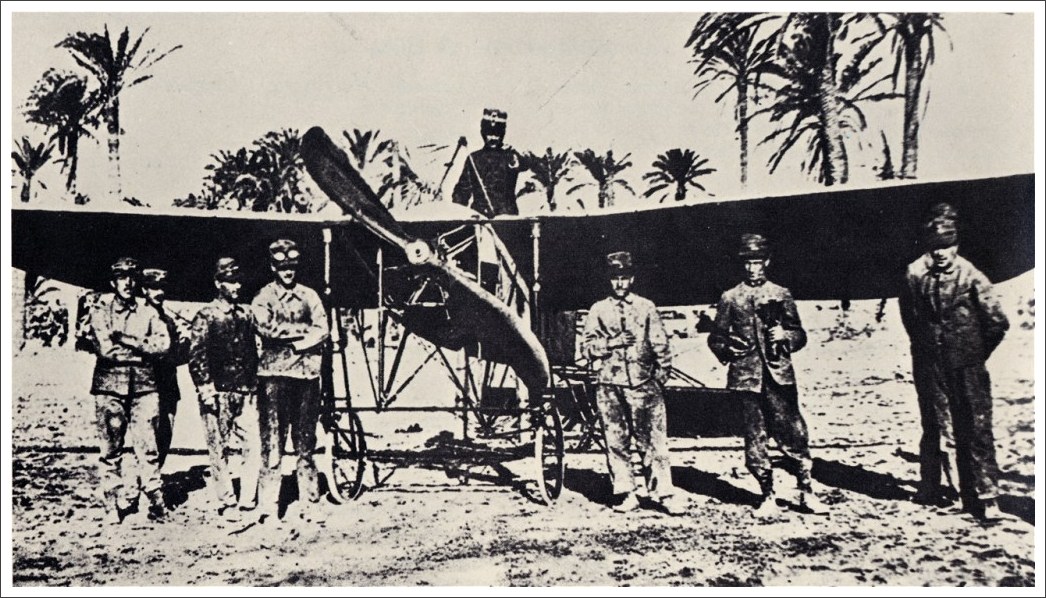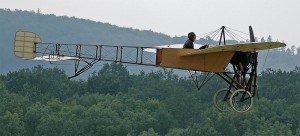The World’s First Warplane
One hundred years ago this Sunday, on October 23, 1911, Captain Carlo Piazza climbed onto his spindly Blériot XI and made military history
/https://tf-cmsv2-smithsonianmag-media.s3.amazonaws.com/filer/20111021031009Bleriot1DBracher1.jpg)
As the Italian air force flies General Dynamics F-16s and Panavia Tornados above Libya enforcing a UN-backed no-fly zone, its pilots may be experiencing a sense of déjà vu.
One hundred years ago this Sunday, on October 23, 1911, Captain Carlo Piazza climbed onto his spindly Blériot XI and made military history by spying on the enemy below.
At the start of the Italo-Turkish War, the Italian Royal Army Air Services shipped its entire aircraft inventory to Tripoli: two Blériot XI2, three Nieuport monoplanes, two Farman biplanes, and two Etrich Taube monoplanes. The war, fought between the Ottoman Empire and the Kingdom of Italy, ran from September 29, 1911 to October 18, 1912, and was the first to use aircraft for reconnaissance and bombing.

Captain Piazza's Blériot XI during the Campaign of Libya, 1911. Photograph courtesy Le origini dell'Aeronautica Militare Italiana.
The Specialist Battalion’s first task was to fly over enemy territory gathering intelligence. The Blériot had a 25-horsepower, three-cylinder engine, no instruments of any kind, and used Wright brothers’-style wing-warping.
Nine days after Piazza’s reconnaissance flight, on November 1, Second Lieutenant Giolio Gavotti, in an Etrich Taube, would carry out the first aerial bombardment. In May 2011, the BBC World Service released copies of the letters the young lieutenant wrote home. “Today I have decided to throw bombs from the aeroplane,” Gavotti wrote to his father. “It is the first time that we will try this and if I succeed, I will be really pleased to be the first person to do it.” Gavotti headed for Ain Zara, a small oasis, where he expected to find 2,000 Arab fighters and Turkish troops. “After a while, I notice the dark shape of the oasis,” he wrote. “With one hand, I hold the steering wheel, with the other I take out one of the bombs and put it on my lap…. I take the bomb with my right hand, pull off the security tag and throw the bomb out, avoiding the wing. I can see it falling through the sky for couple of seconds and then it disappears. And after a little while, I can see a small dark cloud in the middle of the encampment. I am lucky. I have struck the target.”
The BBC noted that the term “bomber” hadn’t yet been coined; instead, news reports referred to Gavotti as “the flying artilleryman” who invented “the art of winged death.”
